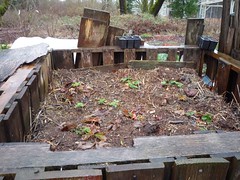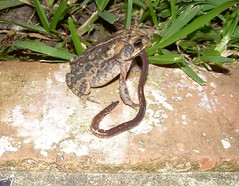 |
| Bringing another area into use with a bark chipping mulch |
The heat and the hard work didn't dismay us, though and Adrienne and one of the trainees had a race off to see who could fill their barrows first and run them to the area we were covering. It was a close match - although I think Adrienne won by a handle.
 |
| We'll have squashes growing here in the Autumn |
 |
| The strings of toad spawn wrap around weeds to keep them in the water |
I'm away for the next two weeks - so no blogs over that period.Have a good Easter break!
In the meantime if you're interested in joining us at the farm, now that the weather's better come along any Tuesday after 10.00 for a chat or email dave_meara@hotmail.com
If you've got any thoughts on this or anything else to do with the urban farm just leave a comment in the box.




